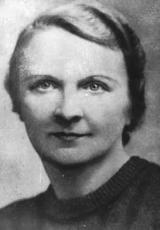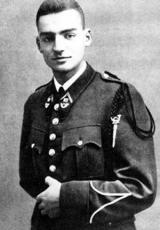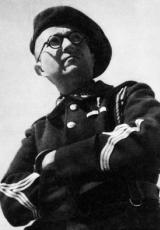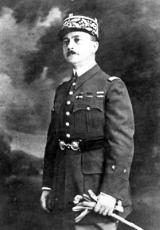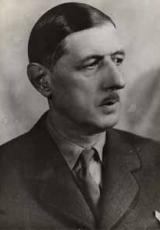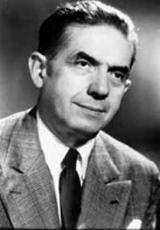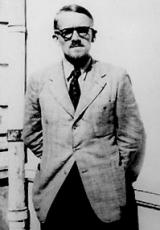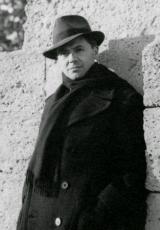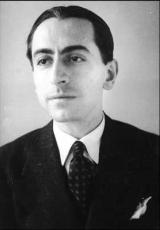The Resistance

”The day will come when the French condemned to death by Vichy will be glorified; their
names will be found in streets and villages all over France. A France that will have found
the freedom and glory of yesteryear within a free Europe”. Winston Churchill, Aug. 1940
The armistice that ended the fighting between French and German armies was signed on 22 June 1940; at least 92,000 soldiers died at the front and 1,850,000 are imprisoned by the Germans; France was cut into different zones. One zone belonging to the German occupation and another zone, defined as ”free”, was under the administration of the French government. Marshall Petain, who has been leading this government since 17 June announces that he will ask for an armistice that will establish a regime in Vichy, a so called ”French State”: he strongly recommended ”collaboration” with the German Reich and a profound internal reform of the country, the ”National Revolution.”
From the very start of the occupation, instinctive attitudes such as refusing to accept defeat, collaboration and national revolution were in evidence pretty much everywhere (especially in the occupied zone). They were mostly the result of individual, spontaneous and uncoordinated acts: [list]producing tracts or graffiti hostile to the enemy and even to Pétain; [list]assisting and helping injured, stranded or escaped British and French soldiers to evade capture; [list]retrieving and hoarding weapons, ammunition and vehicles abandoned by the fleeing troops; [list]sabotaging of plans and demonstrations of hostility towards the occupying forces carried out in rudimentary ways: Wehrmacht signs and notices removed, tyres of military vehicles let down, electrical and telephone cables cut, trip switches sabotaged etc. [list]public demonstrations of patriotism.
While the German occupants thought that with their propaganda they would obtain the consent or at least the passivity of the population, an atmosphere of insecurity set in little by little; the authorities reinforced the measures of repression: curfew and draconian restrictions of movements, which increased the reactions of rejection. Quite soon, some people determined to continue the fight systematically try to organise and coordinate their efforts: it is about ”doing something” (Claude Bourdet). On 18 June 1940, General de Gaulle, former member of the Reyaud government, who had left for London the night before, called on the French soldiers and technicians to join him in continuing the battle. Edmond Michelet and Pierre Eude handed out hundreds of of pamphlets; Jean Texier drafted ”Conseils à l'occupé” (Advice for the occupied); in July 1940 Charles Tillon, refusing the passivity of the leaders of the French communist party, who were paralysed by the Soviet-German pact, urged communist activists to join the resistance of the Hitlerite enemy. In October Henri Frenay wrote the charter of a ”National Liberation Movement” and Socialist Christian Pineau founded the ”Northern Liberation”. From small groups, often made up of friends or co-workers, the ”Musée de l'Homme” group was created around Boris Vildé, Paul Rivet, Anatole Lewitsky or Germaine Tillion in Paris.
In 1941 the Resistance was becoming properly structured in coherent groups. Some consisted of individuals who knew each other and shared the same opinions, gradually expanding their contacts and amassing resources and creating action plans; others set themselves up in liaison with London, thanks to the despatch of emissaries from France Libre or the British secret services (Intelligence Service, Special Operations Executive). Two major types of organisations could be distinguished. The ”networks” were in direct contact with a head quarters based overseas: la France Libre, British headquarters and, later, American headquarters. Because of their specialist skills (information, escape, sabotage etc.), these networks had access to limited recruitment and applied rigorous security instructions, based on the strict close relationship of small teams, each with a specific mission. On the other hand, the Résistance ”movements” wanted to directly influence public opinion and involve the people, using patriotic counter propaganda, conveyed mainly through the press (Libération-Nord, Valmy and Défense de la France for example) and in secret publications (Les éditions de Minuit for example); some of these movements, could reach vast areas (Combat, Libération, Franc-Tireur in the southern zone) whilst others, especially in the northern zone, had limited coverage.
The enormous diversity in the political and professional backgrounds of the first resistance fighters was striking; it is explained partly by the initial lack of commitment from organised bodies or traditional institutions (parties, unions and churches etc.). This situation was to last until the winter of 1941-1942, the date that the National Front and its armed branch, the Francs-Tireurs and Partisans, were created by the communist party, following the invasion of the USSR by Nazi Germany. The Resistance was thus to remain very much a minority in the country.
After the invasion attempts failed in Great Britain and the Soviet Union and the United States entered into the war, the Wehrmacht experienced its first setbacks in 1942: failure before entering in Moscow and Leningrad, retreat at the Egyptian borders, control of air space by allied air forces, Anglo-American landing in North Africa, Soviet victory in Stalingrad. At the same time the atrocities of the occupying forces and Vichy (requisition of manpower, the rounding-up and deportation of the Jews, police collaboration, aggravation of the rationing...) and especially the invasion of the southern zone in November 1942 caused a clear change in the public opinion and incited many patriots to join the Resistance which was becoming more and more organized.
These networks were collecting and transmitting more and more military and economic information, receiving parachuters and materials, marking out landing strips, organising sea connections, etc. ”France Libre” expanded its information service by constituting the ”Bureau Central de Renseignements et d'Action” (BCRA) (the Central Office of Information and Action), directed by colonel Passy and responsible for sabotage missions and contact with the Resistance movement.
Indeed the logistics of these movements improved considerably: financial support was obtained thanks to the establishment of connections with France Libre, fabrication of forged documents, lodging of escaped and pursued people, assistance to the prisoners, commando operations. The printing of clandestine newspapers increased. This lead to the creation of a ”propa-diffu” (propaganda diffusion) service, in charge of supplying paper and ink, making contact with the printers, the transport of newspaper packages all over France, and their distribution.
Stimulated by the progressive inversion of the military situation, the movements also started to constitute ”military branches” and voluntary groups created for military objectives (corps of volunteers). But the change to immediate action caused some controversy: some groups (in particular the Francs-tireurs and Partisans) and some of the people in charge, recommended the generalization of attacks against the soldiers and installations of the Wehrmacht; others prefered to focus only on the targeted operations, working with the allied staffs and on the preparation of future military undertakings, in order to avoid wild reprisals against the civil population. The first underground movements, the so called ”maquis”, appear in the south of France.
The contacts between the various Resistance poles increased little by little: between the movements of the southern zone; between the southern zone and the northern zone; between the interior Resistance and France Libre; on 18 January 1943, the Communist Party adhered to the ”fighting France” and sent a representative to London. Conscious that the unity of the Resistance was essential, in terms of effectiveness and image (for the allies), De Gaulle wished to encourage and accelerate the phenomenon. He entrusts to his delegates the mission of gathering the greatest number of Resistance leaders within different organizations capable of working out some unitary action doctrines; Jean Moulin in December 1941 in the non-occupied zone and later throughout the entire country; Fred Scamaroni in January 1943 en Corsica; Pierre Brossolette in February 1943 in the occupied zone.
In 1943, the allied offensive began to take shape: withdrawal of the armies of the Axis from Russia and North Africa; Anglo-American landing in Sicily; capitulation of Italy; the Allies bombs without respite the industrial headquarters and the strategic military stations of the Reich and the territories occupied by the Wehrmacht. Meanwhile on 16 February 1943 the Vichy government created the Service du travail obligatoire (STO) (Forced Labour Service). This institution was created to satisfy the needs of the occupying forces: they needed more workers to replace the German workers had left for the front and to support the war effort. Approximately 650,000 French civilians went to work in Germany. The many civilians who refused to go work in Germany received assistance from the civil population and Resistance organizations in order to hide and protect them. A lot of them joined the allied armies or constituted underground movements (maquis) in isolated zones: the Ain and Vercors departments. The SS, Gestapo and police of Vichy pursued them as well as resistants and increasedthe reprisals against those suspected of protecting or assisting them.
In spite of the gaps caused by the Nazi and Vichy repression, the surge of young Resistance members allowed the Resistance to develop and expand its terms of action. This action was made up of military forces covering the whole territory: the movement of the southern zone and the armed groups (maquis, military branches of the movements and groupes francs) completed their merging: the three principal movements of the southern zone, Combat, Libération and Franc-Tireur, made up the Mouvement Unis de la Résistance in January 1943; on 27 May the National Resistance Council was created. This institution brought together representatives of the resistance movements from the two zones. There were representatives of the ”political tendencies” (some former parties of the 3rd Republic: PCF, SFIO, the radical-socialist party, etc.) and some delegates of the trade-union organizations. On 29 December 1943 the decision was made to unify the organizations of the armed resistance within the Forces Françaises de l'Intérieur (FFI). .The fights and attacks increased against military objectives and factories working for the enemy. In September 1943, Corsica was liberated by the joint action of the island's resistants, the FFL and the allies. The first structures of the future government were created by De Gaulle in Algiers, they included: Comité Français de Liberation Nationale (French Committee on National Liberation) (CFLN) in June 1943 and the Consultative Assembly in September.
The Resistance was finding growing support in the population and also in many professional environments. The 14th of July and the 11th November 1943 some demonstrations and strike movements in several large cities took place; the NAP, created in August 1942 and directed by Claude Bourdet, undertook the infiltration of the administration. But with the creation in January 1943 of the Militia by Darnand, the political radicalisation of Vichy, the increasing repression and persecutions of the Jewish population harshly affected resistants and civilians.
At the beginning of 1944, the Forces Françaises de l'Intereur (French Forces of the Interior) were constituted by a merger of military groups of the Resistance movement and the Organisation de Résistance de l'Armée (Army Resistance Organisation) (ORA), with their ”maquis” and corps of volunteers - except the FTPF. As the prospective date of the allied landing, the debate concerning the role and the statute of the maquis within the Resistance increased. Some of them, in particular those lead by the FTPF, advocated immediate action, the guerrilla, to weaken the Germans, mobilize the population and to safeguard the moral of the troops. Others prefered to follow the instructions of the allies and get ready to play a supportive military role once the landing had taken place; they then tried to establish real ”maquis-fortresses” gathering several hundreds of young resistance memebers. In spite of the insufficiency of their armament, the resistance finally contributed in an essential way, to preparing the landing of the 6th June 1944 in Normandy and liberating the national territory:
- They slowed down, by sabotaging and ambushing the movements of the enemy troops trying to join the frontline in Normandy and face the fights in various strategic locations: Mont-Mouchet in Auvergne, Saint-Marcel in Brittany and other locations in Savoy, Upper Savoy and in Isère. Three important operations were attempted: two in the Alps to threaten the Germans who surged back in the valley of the Rhone (Glières and Vercors), and one in the Massif Central (Mont-Mouchet) to delay the SS Das Reich division, stationed in the south-west from moving towards Normany. For the resistance these operations caused heavy losses. Nevertheless they left a spectacular mark on the come-back of occupied France during the war. - They served as scouts for the allied armies or joined the commandos of France Combattante and to the inter-allied commandos. - They released a great number of cities (for example Paris, Dijon, Clermont-Ferrand and Annecy) and about thirty departments; - They contained the enemy units which occupied the ”pockets” and ports of the West coast; - They joined the units of the 2nd armoured division and of the First Army in their progression towards Vosges, Alsace and Germany. Nearly 300,000 men participated in these operations, supported by a part of the population.
This documentary file has been created on behalf of the Fondation de la Résistance (Resistance Foundation),
by Denis MAZZUCCHETTI, text and by Frantz MALASSIS, design. It has received the support of many key figures.
Personalities
Related articles
- The unification of the Resistance
- The Resistance and the Networks
- Septembre 1943, la libération de la Corse
- Aux origines de la France Libre
- Les Français parlent aux Français
- The Men of Glières
- Who were the Free French?
- The Resistance in Bigorre (65)
- The resistance in Corrèze and Creuse
- The Resistance in the Haute-Vienne department


